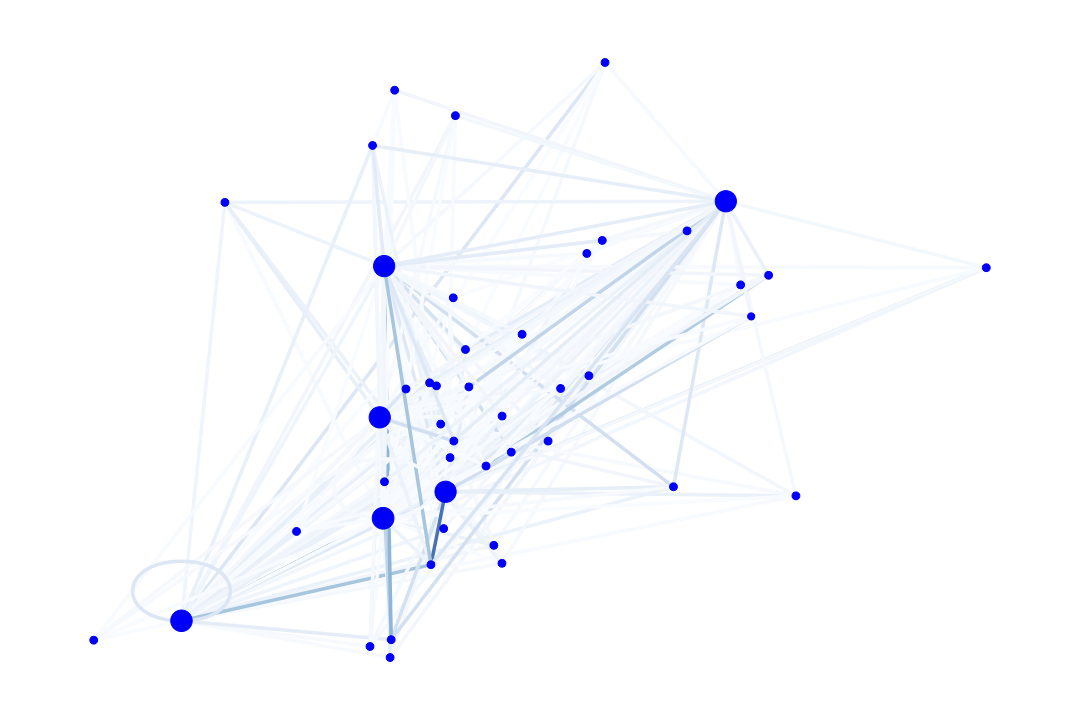My work on economics and financial networks
A significant part of my Ph.D. research is on the strategic interactions of economic agents in networks. Economic networks are ubiquitous in the real world and include supply/value chains, private over-the-counter markets, futures markets, and more. In this page, I'll discuss the practical implications of my work for market shaping and deal-structuring, especially for emerging technologies. Then, I'll discuss the academic details of the work and give links to the papers for interested readers.
Practical Takeaways
My work has the following practical implications for emerging industries such as clean power, novel vaccines, and engineered food.- Advance market commitments reduce counterparty risk. Researchers such as Michael Kremer have found that advance market commitments can be a powerful coordination mechanism between buyers and sellers. From a network point of view, an AMC de-risks not only the buyer and seller, but reduces counterparty risk for all of the neighbors of the AMC members.
- Securitization increases liquidity, decreases risk, and acts as a price signal. Mature commodities markets are financialized. For example, wheat futures markets give players access to liquidity pools that enable more sophisticated portfolio strategies and better risk management. To hedge risk, the owner of a large wheat farm can take a short position in the wheat futures market. This in turn creates a more liquid market, which reduces the bid-ask spread and acts a price signal even to those not in the market.
- Networks amplify changes in the supply chain. Supply costs scale nonlinearly as a function of the overall network structure. Just as the global weather system is chaotic and subject to the butterfly effect, supply chains are dynamic systems that can have a long-term ''memory'' of relatively small perturbations from the past. A rigorous cost dynamics model therefore must take the network structure of the supply/value chain into account. For example, during the early COVID-19 pandemic, small disruptions in the supply chain were amplified by the long dependency chains in global networks. The ensuing network congestion created long-range effects that are still present, despite global efforts to increase supply.
Research Takeaways
From an academic perspective, the key findings of my work are:- Nonlinear effects of agent actions: Economic agents have nonlinear utility functions that capture their risk preferences in addition to their expected return profiles. Therefore, when one agent takes an action in the network, the global effect of their action is also nonlinear. Mathematically, we can model this nonlinear relationship via the inverse risk matrix of the agent in question.
- Observers can learn agent preferences from the network: The private goals of agents lead them to interact in strategic ways and give rise to the overall economic network. Given observations of the economic network over time, we can use statistical methods to reverse-engineer the preferences of the agents within the network. Moreover, our statistical inference procedure has an efficient algorithm via convex optimization, which is a type of machine learning.
- Strategic actors can exploit insider information during negotiations: If an agent knows the private preferences of her counterparties before negotiations commence, she can take a strategic negotiating position (for example, under-valuing a business partner) to obtain better terms in the deal. Even heavy-handed market interventions can only partially limit such strategic behavior. As a result, agents have strong incentives to use statistical procedures (such as our convex optimization method) to learn as much as possible about their counterparties' true preferences.
Links to my Papers
See the following papers for more details.Strategic Contract Negotiation in Financial Networks
Akhil Jalan, Deepayan Chakrabarti.
2024.
[arXiv]
Incentive-Aware Models of Financial Networks
Akhil Jalan, Deepayan Chakrabarti, Purnamrita Sarkar.
2024.
[arXiv]